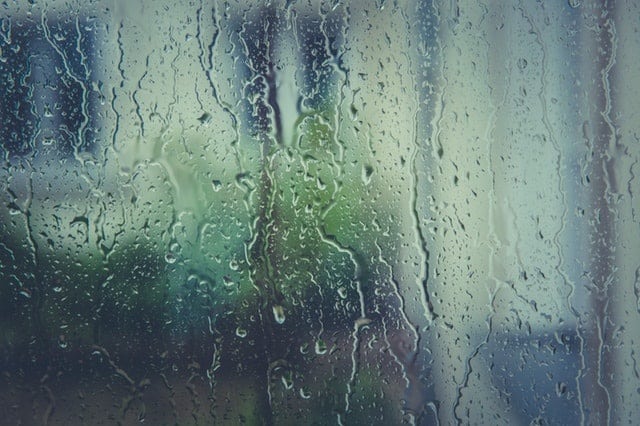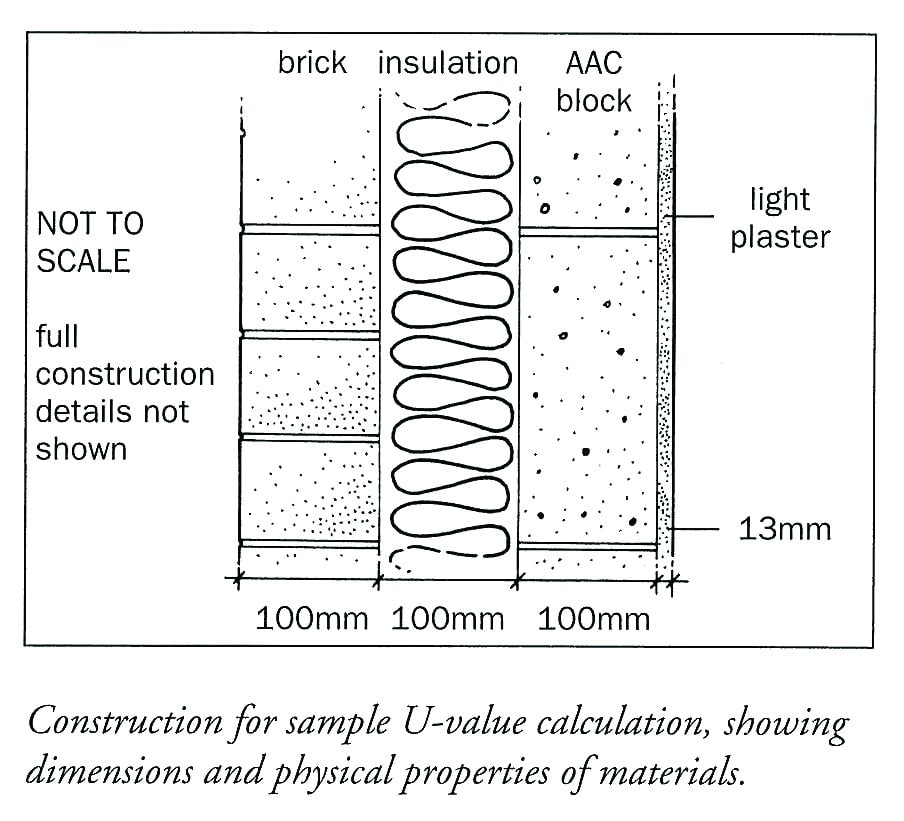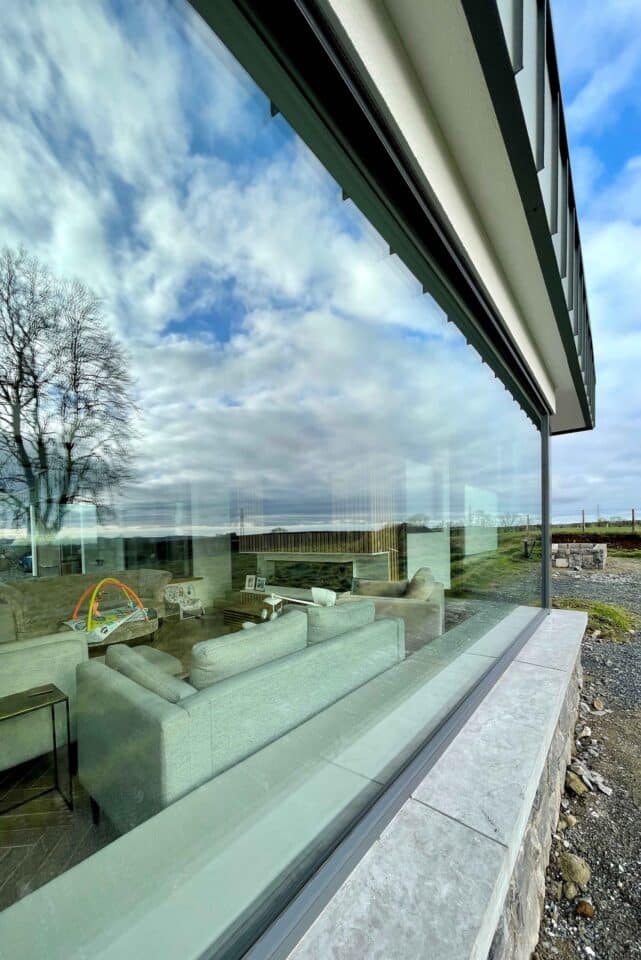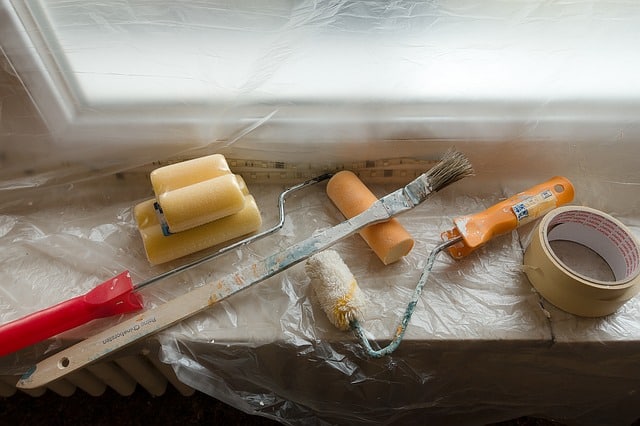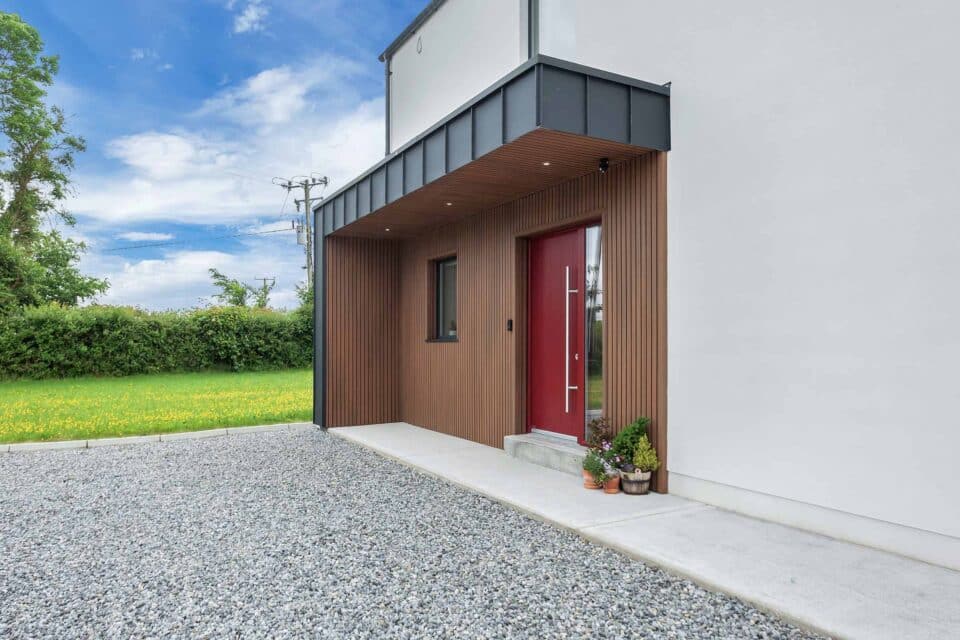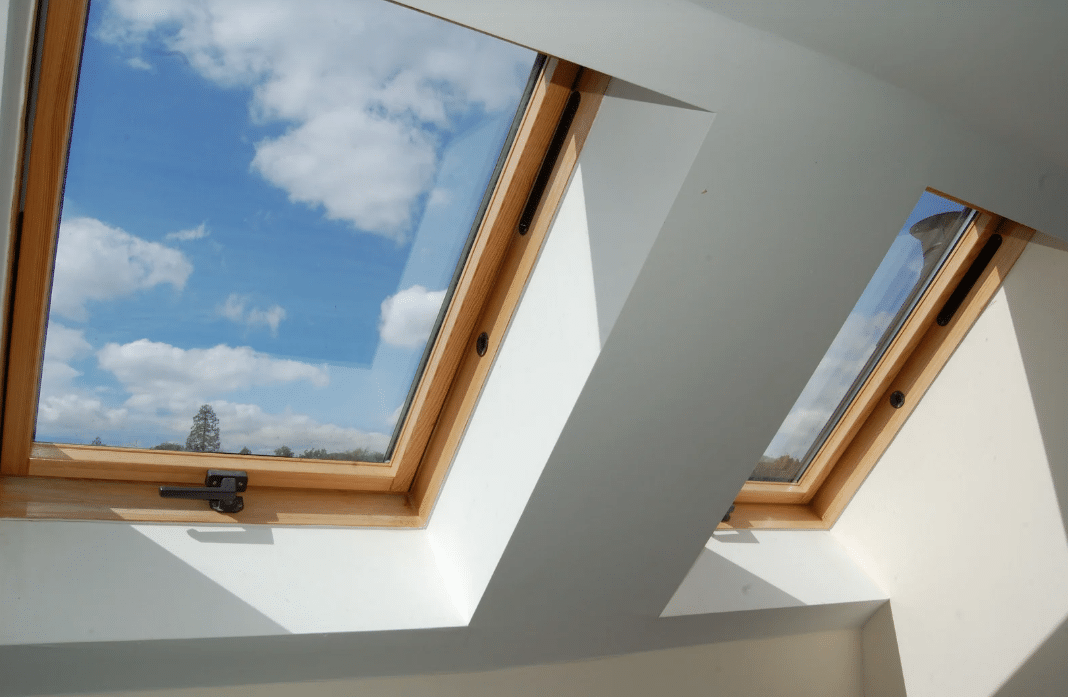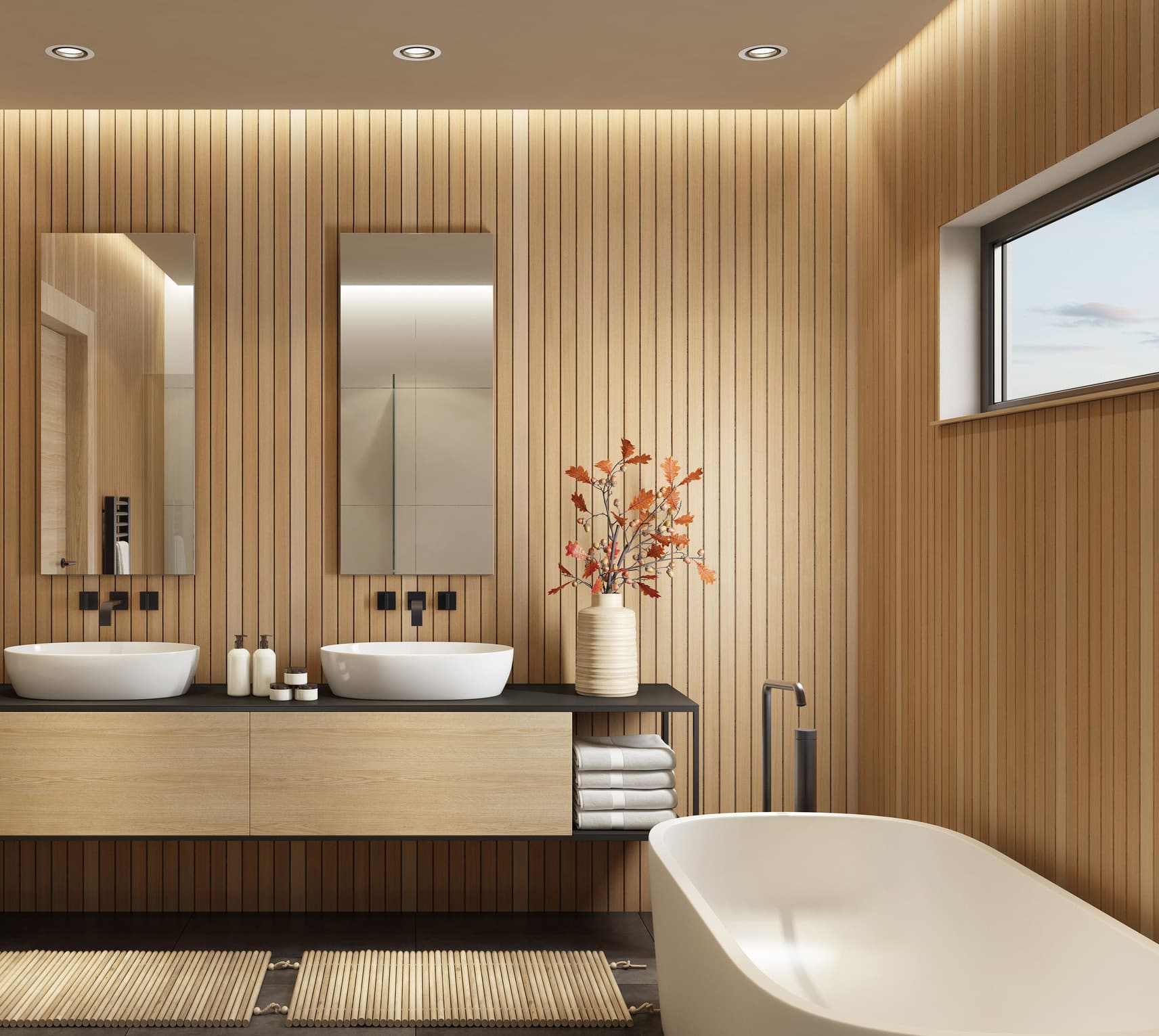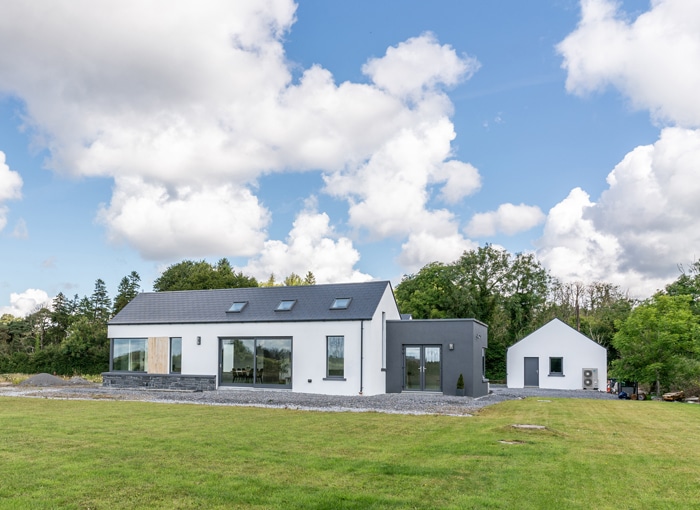Cause & effect
Despite the best efforts of the ‘damp-proofing industry’ and the proliferation of ‘waterproof’ products in the second-half of the 20th century, it’s difficult or near impossible to keep water out of buildings, irrespective of age. This might explain why our grandfathers relied on good drainage to keep water away from the building and used breathable materials to promote ventilation. However, if these systems are compromised, they can become ineffective and cause moisture or damp issues to accumulate.
It’s very difficult to tell how well preventative measures on your new build will hold up – in fact, most of us will only become aware we have a damp problem when it is picked up in a building survey or when we see one or more of these symptoms:
- Wallpaper/paint blistering or peeling easily from a wall, possibly with black mould growing behind.
- A tide mark developing on the wall, possibly with a salty edge.
- Dark staining to the wall.
- Fungal decay in skirting boards.
- Damp or wet patches or water droplets on the wall.
- Swelling of doors, drawers in furniture.
It’s imperative you first identify the exact type of damp you have in order to treat it successfully. To do so you should contact a remedial surveyor for an assessment, but as a general guide treatment should include the three ‘R’s – remove the moisture source; repair the property, paying particular attention to insulation, heating and ventilation; and redecorate!
Condensation
The most common source of damp in our wet and humid climate is condensation, and it happens when warm, moisture-laden air hits a colder surface. The amount of water held in the air rises and falls with room temperature so when warm air cools, water is slowly released in the form of condensation. Having poor external wall insulation, no heating and poor ventilation in the room will obviously exacerbate the problem by making surfaces cold. Should the surface be non-porous (like glass windows or tiles) it can form droplets. When surfaces are porous (like brickwork and plaster) it usually cannot be seen because it is absorbed. Houses with condensation problems are usually unhealthy to live in because fungi and bacteria thrive in the warm, humid air they create and can trigger many illnesses, including asthma.
Symptoms: It has been suggested the average family produces around five litres of moisture per day through washing, bathing and cooking; therefore areas particularly susceptible to condensation are ground floor bedrooms, kitchens and bathrooms. When condensation occurs over a long period of time, bricks and plaster will get damp and mould can start to appear. This will happen around windows, in outside corners, in colder bedrooms and often in or behind wardrobes against an outside wall. An unmistakable musty smell is often associated with condensation with the mould affecting wallpaper, paint and fabrics. In fact, it may even transfer to clothing and leather items within the room – if condensation persists, excess humidity in the air will be absorbed by any porous material in the vicinity. A remedial surveyor tells us he once found mould on leather boots that were tucked away under a bed!
Solutions: Replacing single glazed windows with double glazing and insulated frames, or thermally broken frames, will help around the window area (although if your property is listed or protected you won’t be permitted to replace single glazing). This won’t solve the damp problem in the room/house; it will eliminate condensation on your windows but may transfer the moisture to the walls instead.
Dehumidifiers can reduce the humidity in a room by collecting condensation in the air, however they really only work as a temporary measure. Special mould paints are available and can temporarily help, but again won’t get to the root of the problem. Increasing ventilation (preferably with a dedicated whole house system), heating, levels of insulation and permeability of wall in finishes, and generally cutting down on production of moisture indoors will lead to improvement.
An initial low cost solution consists of installing trickle vents on your windows – these are especially useful if you cannot open them, e.g. where noise or security issues are present. Trickle vents will create a cold draught so if you can afford it, consider the ones that are fitted with a moisture sensor (demand controlled ventilation whereby a rubber-like membrane expands when moisture levels rise, which in turns pushes the vent open). If you can, when you are cooking, bathing or washing remember to open at least one window in the room, and closing the internal door to make sure the moist air exits the house through the open window, rather than travel elsewhere within the house.
Rising Damp
Many buildings are made from porous materials which means they can absorb moisture from the soil or ground, which then rises in what is termed a ‘capillary’ action. The denser the material the more condensation prone it is, e.g. granite or stone are more susceptible. Many factors have an influence on whether damp rises in a wall and actually creates a problem, such as a defective damp proof course (DPC) or poor drainage outside. It is for this reason that rising damp generally affects older properties.
Symptoms: Ground water contains various dissolved salts in the form of nitrates, chlorides and sulphates. These pass up the wall with water and are left behind as solid salts when the water evaporates, accumulating on and near the surface of the wall. The sulphates form ‘efflorescence’ on the wall, which can do some damage to the surface and will appear unsightly (white floury crust).
Note that efflorescence can appear normally on brick following rain hitting it – in both instances soluble salts move from the core or the ground to the evaporative surface, where they are deposited. The nitrates and chlorides are somewhat more troublesome as they absorb moisture from the atmosphere surrounding them. If these salts are left on the wall, in the case of rising damp even if the original cause has been fixed, the damp issue will remain as the salts continue to draw moisture in. This process will damage internal decoration/ plaster and will, if the moisture content is high enough, allow attached timbers to rot.

